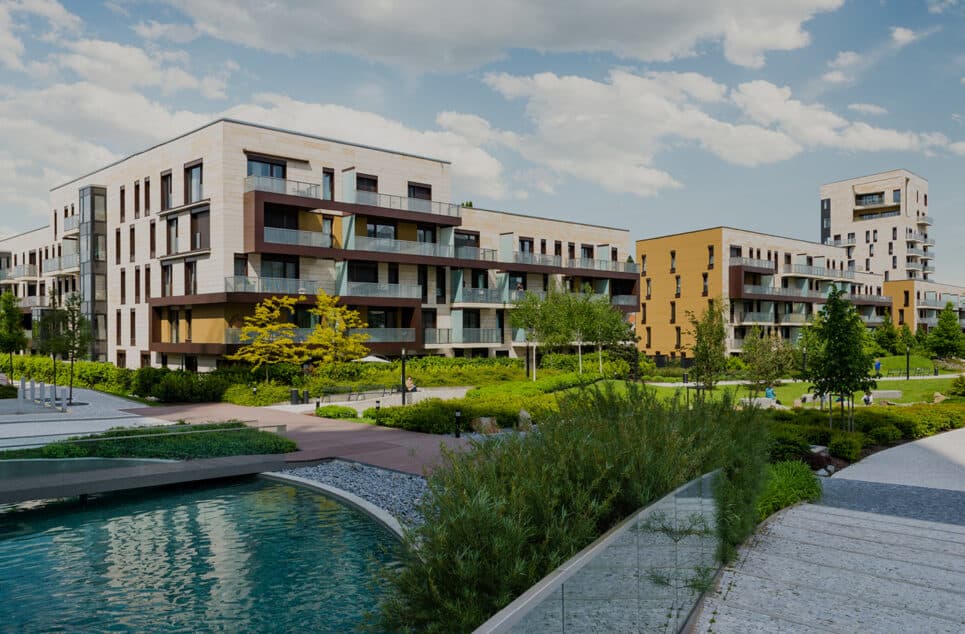
Autonomy, from building to region
Together, the Covid-19 crisis and the climate emergency demonstrate the need to relocate vital services such as health, food and energy. And And to preserve water, to ensure the autonomy of all: there is no alternative for tomorrow’s world. This new paradigm allows architects and urban planners to think of buildings as trees and cities as forests, but it calls for cooperation at all levels.
Pasta, rice, toilet paper – remember? Before the first lockdown had even come into force in March 2020, supermarket shelves in France were taken by storm. The French Minister of the Economy and Finance, Bruno Le Maire, issued an appeal for civic responsibility. “There will be no shortages,” he promised. A few weeks later, while agricultural commodity markets had risen by about 10%, the United Nations Food and Agriculture Organization (FAO), the World Health Organization (WHO) and the World Trade Organization (WTO) predicted a growing risk of global food shortages. Among the main factors were protectionist measures taken by some countries, transportation difficulties, etc.
"We will have to reconstruct French agricultural, health, industrial and technological independence."
‐ Emmanuel Macron, French Président
In the Paris region, for example, nearly half of the land is devoted to agriculture but 90% of the food consumed is imported, according to ADEME. And it’s even worse considering cities in isolation. “We will have to reconstruct French agricultural, health, industrial and technological independence,” declared President Emmanuel Macron on April 13, 2020.
The Covid crisis has reopened the debate on food autonomy, but energy autonomy is also in the spotlight, against a backdrop of rising gas and oil prices, the impending scarcity of these resources, and the urgent need for transition imposed by the climate crisis. Not to mention the aging of current facilities. In France, the shutdown for maintenance of a number of nuclear reactors at the beginning of this winter has renewed fears of a blackout in the event of extreme cold. Meanwhile, increasing droughts and pollution are putting more and more pressure on the availability of water and the need to protect and conserve this vital resource.
There is no doubt about it: in order to be more resilient in the face of possible instabilities and crises, we now require greater local autonomy in energy, in water, and in food.
This is particularly true in architecture, building, urban planning, regional development. But autonomy does not necessarily mean self-sufficiency or autarky. “Autarky defines material independence, the economic regime of self-sufficiency […], the economic regime of a self-sufficient community,” explains architectural historian Dr Fanny Lopez, an expert in energy autonomy. Autonomy, on the other hand, has “a political dimension” and refers above all to “a process of empowerment”, consisting of taking back the capacity to govern oneself by one’s own laws.
History is full of dreams of self-sufficiency, as Lopez notes, but the concept of autonomy, and in particular energy autonomy, grew in importance at the end of the 20th century, thanks to environmental concerns, particularly global warming. Alongside the desire or possibility to live at least partially in individual or even collective self-consumption, there is now legislation in France that establishes forecasts for the ecological transition. The Green Growth Act (2015) encouraged energy autonomy projects, while the Climate and Resilience Act (2021) supports the development of renewable energy communities and citizen energy communities.
Meanwhile, the target of achieving carbon neutrality by 2050 set out in the National Low-Carbon Strategy (SNBC) is being implemented at local level through territorial climate-air-energy plans. These plans increasingly have to be applied to regional planning, in particular through public establishments for cooperation between local authorities, together with policies relating to water and food in particular, and with the massive development of renewable energies: photovoltaic and thermal solar energy, wind power, hydroelectricity, biomass, geothermal energy, anaerobic digestion, marine energy, etc.
In such a context, there will be more and more initiatives in the future which will make individual or collective housing, office buildings, neighbourhoods, towns, territories, and so on increasingly autonomous. Local authorities will have to intensify cooperation, both internally and with other authorities, to accelerate and consolidate the relocation of energy and of food, which will be essential for their autonomy, for that of their inhabitants and that of their businesses. What is the situation today?
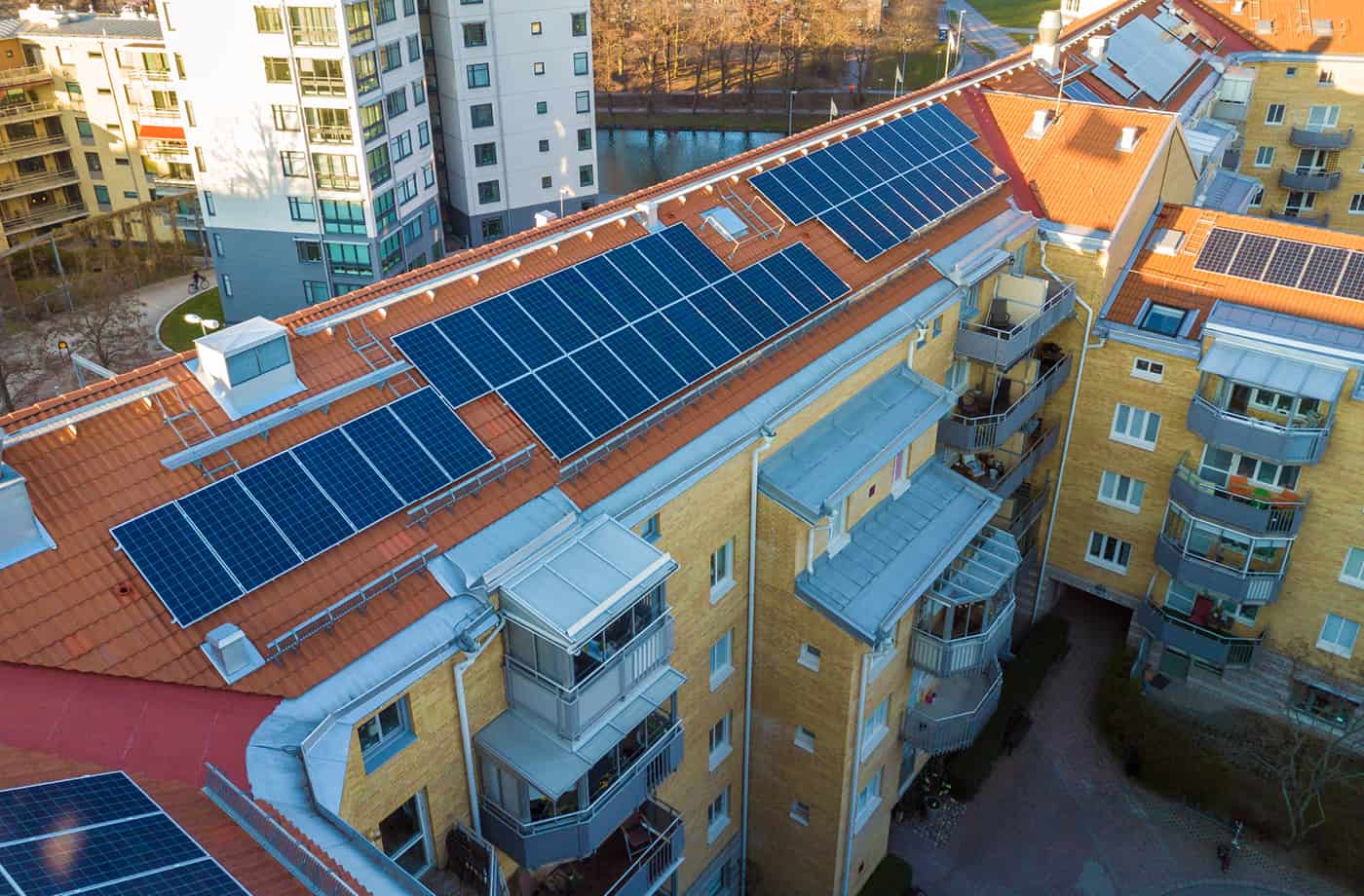
The desire for autonomy, from buildings to territories
Whether they are individual houses, residential buildings, office blocks, islands, small towns or highly motivated territories, there are more and more initiatives aimed at energy, water and food autonomy. All of them are being evaluated, and they serve as examples for others.
South-facing windows to take advantage of the sun in winter and protect against it in summer with a veranda as a buffer zone and with deciduous plants; window-free north-facing facade with a garage, laundry room, storage space and bin room, plus evergreen plants to give protection from cold winds; possibly a semi-buried construction to limit temperature variations; external insulation with a timber frame, ventilation by mechanical ventilation or a natural well; walls capable of storing and progressively releasing heat; bio-sourced materials, etc.: the concept of a passive house is well known. If you add a wood-burning stove and photovoltaic and thermal solar panels, or hybrids, it even becomes “positive”, providing energy autonomy and hot water.
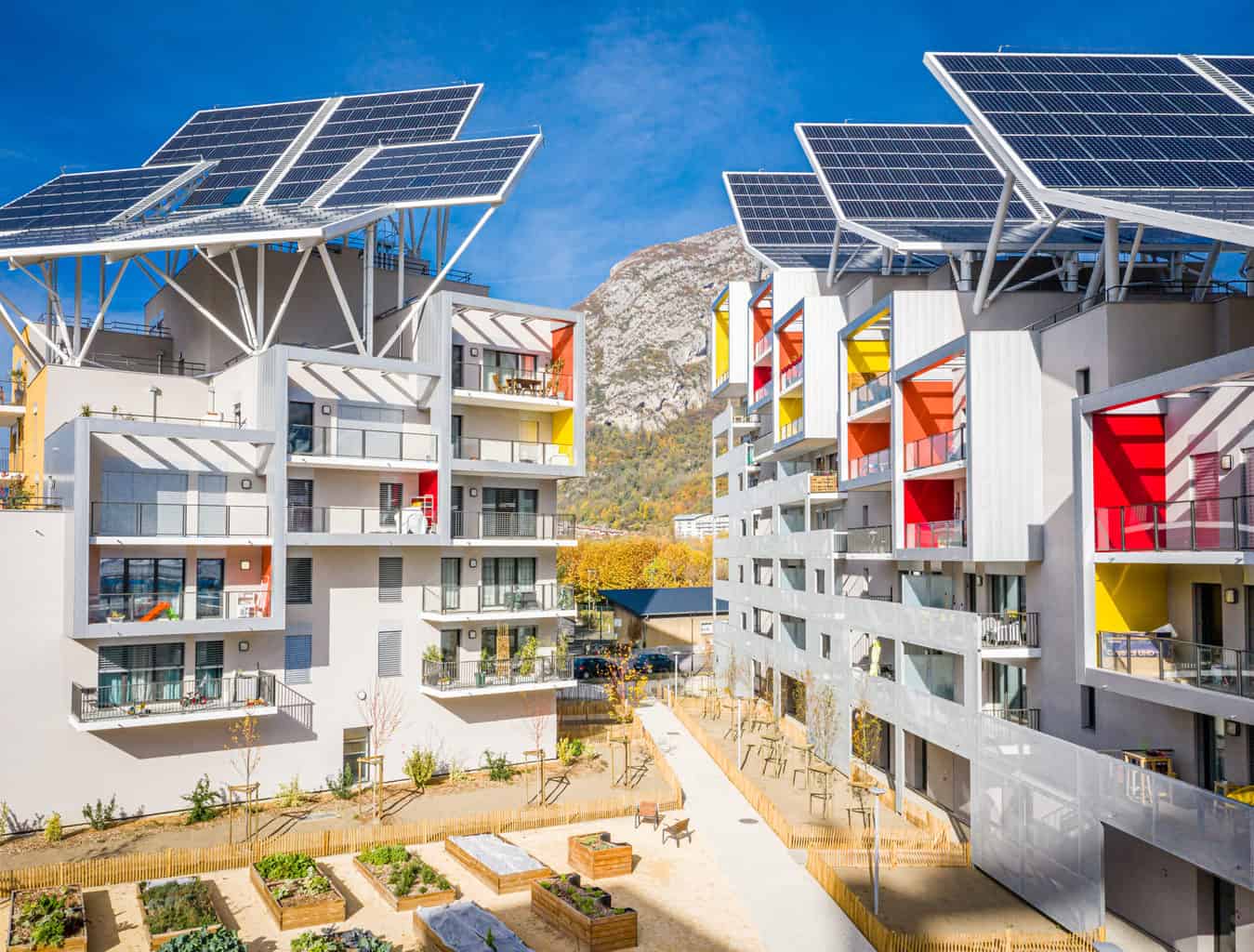
In the Swiss village of Villarzel, not far from Lausanne, the Lutz architecture firm is going further. In a house with two apartments, it is also seeking to achieve water autonomy. “A 10,000-litre rainwater recovery tank provides drinking water, supplies the washing machine and waters the garden,” they say, ensuring that the roof materials do not pollute the water as it runs off. To limit the need for water, the house is equipped with urine-diverting dry toilets: urine is filtered to remove micro-pollutants (substances from issues medicines, cosmetics, etc.) and then is used as fertiliser, while excrement is “transformed into compost by earthworms.” Other wastewater is filtered and purified by plants in a phytodepuration basin. The aim is to use water in a more or less closed circuit, a concept that is also good for cultivating the garden.
Autonomous buildings for offices and housing
In larger buildings, architects and builders are now aiming first and foremost for energy autonomy. In Saint-Herblain, for example, in 2017 the developer Galeo inaugurated Delta Green, the first “positive energy” multiple-use office building in France, which provides 4,600 m2 of office space. Among the building’s secrets are a design that limits energy requirements; production of more energy than is required thanks to photovoltaic panels and a heating/cooling system based on geothermal probes and geocooling (technologies that use the temperature of the subsoil); a hydrogen station – the first in France for a building of this type – to store excess energy when there has been a lot of sunlight; and awareness-raising operations for occupants to make them more active in all aspects of low-energy consumption.
Users are also described as “major players” in another building, in this case for residential use, which is also a first in France: ABC, which stands for Autonomous Building for Citizens. This complex of 5,000 m2 of floor space comprises two buildings containing 62 rental flats. Located in Grenoble, it was designed by Bouygues Construction’s R&D department. It required exemptions from the current regulations: ABC captures the sun’s rays and recovers rainwater… a bit like a tree.
Here, some 700 solar panels installed on the roofs over more than 1,100 m2 of surface area ensure 70% energy autonomy, helped by a storage system in the radiator batteries and a heat pump system that recovers heat from the grey water generated by showers and kitchens. A+++ rated domestic appliances and LED lighting also play a key part in the building’s energy efficiency.
As far as water is concerned, a water treatment plant run by Suez has been installed inside the building itself. Collected rainwater is made drinkable and supplies all the equipment in the apartments. Some flats are even equipped with recirculating showers that allow part of the water to circulate in a closed loop. Grey water, which is only slightly polluted, is recovered and treated for flushing toilets and watering plants. All these innovations should make it possible to reduce the consumption of water from the city’s network by two-thirds.
Waste has not been forgotten, with residents sorting and recycling their waste through composting, which is beneficial for the gardens. Nor has soft mobility, with one space per inhabitant in the bicycle rooms, and nor have well-being and contact between inhabitants with deliberately generous common spaces and, of course, shared gardens.
The first tenants took up residence in the summer of 2020, and in all these areas of energy efficiency, the developers of ABC consider them to be “major players.” The performance of ABC Grenoble, which could become “the first in a long line” for Bouygues Construction, will be monitored over five years.
Projects for tomorrow
In addition to producing energy and harvesting rainwater, a building can even be imagined as a source of food, like a forest, as a way of moving towards food autonomy. One such example is a futuristic green building called the Arboricole, designed by architect Vincent Callebaut. It has 9,400 m2 of floor space with about fifty “modular” apartments brimming with balconies and up to 20,000 plants “forming a kind of ecosystem” and intended to “improve the well-being of city dwellers and the energy savings of increasingly urbanised cities,” while at the same time absorbing CO2 and producing oxygen. Designed in the context of “Imagine Angers”, a call for urban projects for the city of Angers, it won a public vote in 2018, but was not selected for construction. Maybe next time?
The Chinese government has launched an even more ambitious international competition for the construction of a neighbourhood for 3,000 residents that will be autonomous in terms of energy and food supply in Xiong’an, a new town located about 100 km south-west of Beijing. A Spanish firm, Guallart Architects, won the contract with a project that integrates risks that arose during the public health crisis. Greenhouses on top of all the buildings, solar panels on the roofs of the greenhouses, water recuperators, “sustainable” timber buildings, green spaces, but also mini factories with 3D printers, flats with 5G and terraces designed to facilitate remote working, multiple services accessible on foot (school, day care centres, farm, market, shops, government agencies, etc.). “Our proposal stems from the need to provide solutions to the various crises that are taking place, in order to create a new urban life based in the circular bio-economy,” architect Vicente Guallart told Reuters. “The next urban revolution will be related to the digital reindustrialisation of cities.”
American scientist James Ehrlich, a former White House appointee under Barack Obama, worked with the Danish architectural firm Effekt on the design of self-sufficient villages, by way of a computer program using artificial intelligence and algorithms. ReGen Villages, which use hemp walls and glass roofs, consist of multigenerational homes which house inhabitants who generate their own energy, develop aquaponic systems and recycle their waste. The first application of this concept, for 600 families, was originally planned for construction in the Dutch new city of Almere in 2019, but in the end the project was not carried out.
In the meantime, small towns and territories are tending to become more and more autonomous. Small islands, which are strictly defined territories and are often very heavily dependent on fuel oil, are entities that tend to have a desire for autonomy. In the Canary Islands, El Hierro has been held up as an example since 2014, when its hydro-wind power plant, which has enabled it to significantly reduce this dependence, was commissioned. The concept consists of combining wind energy with a pumped storage power station (PSTS), which consists of one reservoir above and another below. The principle is to pump water from the lower to the upper reservoir when there is a surplus of electricity production – which is equivalent to storing energy – then to pump it back down, activating turbines as required. A similar system was inaugurated on Ikaria, a small Greek island in the Aegean Sea, in 2019. In Finistere, in western France, the Ponant islands hope to achieve autonomy in energy by 2030 thanks to a combination of photovoltaic, wind and tidal energy.
But it’s not just islands. Güssing, a small town of 4,000 inhabitants in eastern Austria, has been help up since the 2000s as an international model for renewable energies and local autonomy. Town councillors have introduced an energy plan which replaces fossil energies by biomass (particularly forestry waste and plant residues) as well as thermal and photovoltaic solar installations. Alongside these, there has now been added a new technology to gasify wood and simultaneously produce heat, electricity and synthesis gas (syngas). Güssing has inspired others, for example in the Côtes d’Armor region in France, where the Le Mené community of municipalities is aiming for energy autonomy in its territory. Thanks to passive homes, anaerobic digestion, wood boilers, solar and wind power, etc., Le Mené, which has 6,500 inhabitants, now produces practically all its electricity and is targeting energy autonomy by 2025.
In Mouans-Sartoux, near Cannes, the local authority has set its sights on greater food autonomy. After creating a municipally run farm, a first in France, which has enabled the town to employ farmers to provide food for its day-care centres and schools, Mouans-Sartoux set up a Territorial Food Project, a plan initiated and certified by the Ministry of Agriculture. The objectives are to reinstate farmers in the municipality, create economic exchanges, develop food education, contribute to research, and share information about the various actions with other authorities
All these examples relate to large metropolises which, given their consumption of energy and food, and despite their very ambitious targets, will find it ever more difficult to achieve autonomy, the greater their level of urbanisation and the more densely they are populated. What’s the solution? In a word: cooperation.
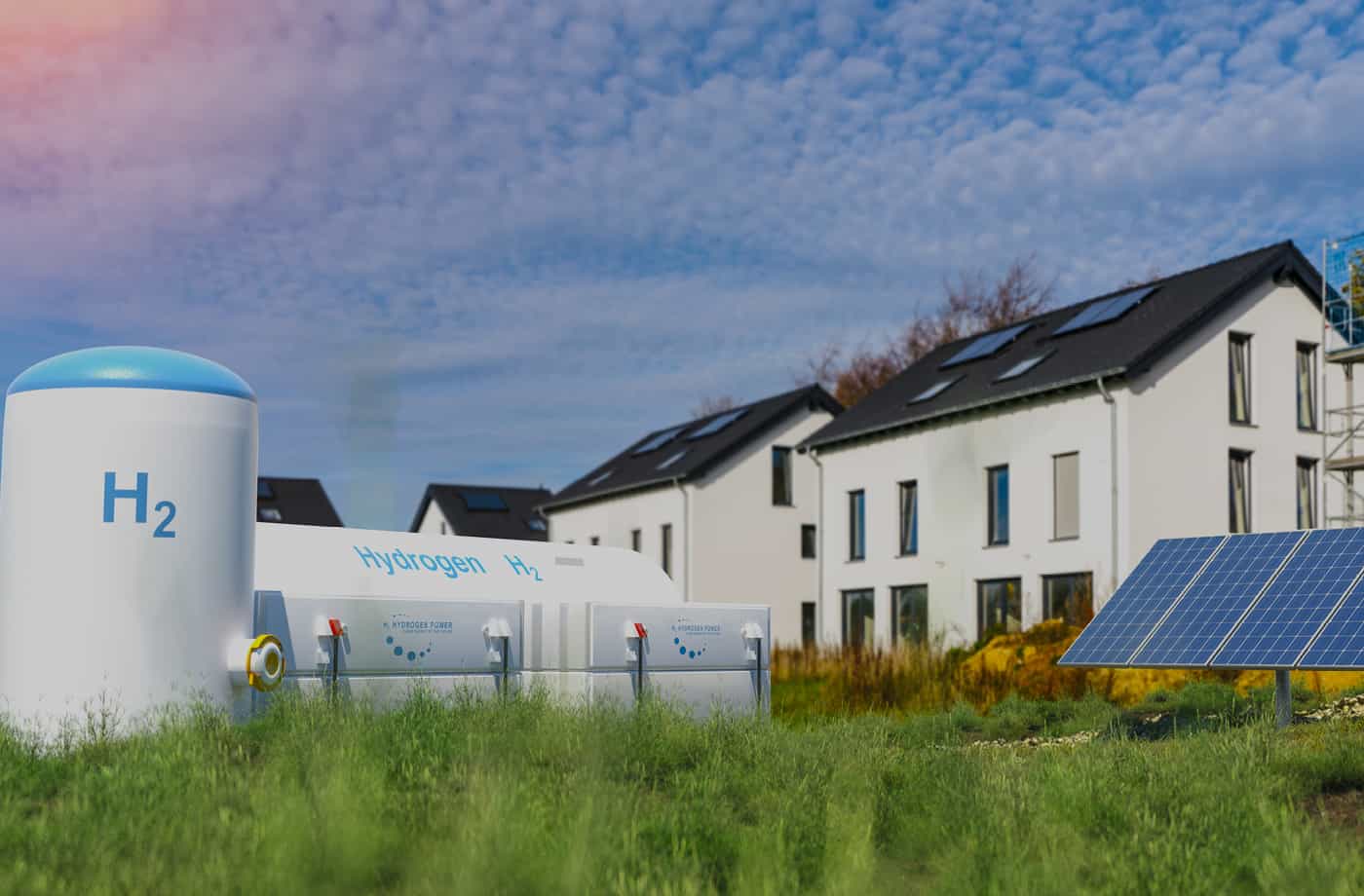
Success factors for greater autonomy
Technologies, governance, cooperation, knowledge of interdependencies, skill sharing, common strategy, “win-win” exchanges: these are all essential factors in boosting the relocation of energy and food production… and in making the desire for local self-sufficiency a reality.
“The future of urban and territorial energy is undergoing a reconfiguration,” says architectural historian Dr Fanny Lopez, a specialist in energy autonomy, who sees the transition that is now taking place as a “massive project”. By planning for a massive development in renewable energies, this transition imposes both the variability of energy sources, such as solar and wind power, and a relocation of an electricity sector that in France is currently highly centralised, at the levels of production (primarily ensured by large power plants and EDF), of transformation (RTE) and of distribution (Enedis).
Thus, a building that produces electricity simply with photovoltaic panels, for example, alternates between times when it produces nothing because there is not enough sunlight and times when it can potentially provide more power than it needs, because of its production capacity and the amount of sunlight. The solution in this case is to remain connected to the main grid, which offsets production stoppages and allows potential surpluses to be injected. This the principle underlying the self-consumption and resale contracts signed with the operators.
Is hydrogen the solution of the future?
For a building to be autonomous in renewable energies, it must of course have sufficient installed power, but this is not enough because electricity cannot be directly stored. It must be transformed into another energy which will be transformed back into electricity when it is made use of. In a building, this storage is currently most often electrochemical, with batteries. However, there are other possibilities, including chemical storage. Excess electricity is then transformed into hydrogen by the electrolysis of water. This is the solution applied by the Delta Green office building in Saint-Herblain, in western France.
The hydrogen can then be stored in fuel cells, which retain energy longer than batteries and produce both electricity and heat. It can also be used as fuel, or injected. Or it can be injected, under certain conditions, into gas pipes. Not to mention that there are now 100% hydrogen boilers. In Japan, several hundred thousand homes are already equipped with hydrogen installations.
Microgrids and the main grid
In addition to technology-related issues, regulatory questions also determine the level of autonomy that housing can achieve. In the United States, where energy distribution has been privatized, entire neighbourhoods have been designed to be disconnected from the main grid, like “emergency backup systems,” according to Fanny Lopez. In New York, an independent private microgrid supplies power to Hudson Yards, the largest housing project in the United States, but without low energy consumption being a priority. In the Bronx, a residential cooperative supplies thousands of homes. In France, “there is no disconnected private residential electricity network at present,” notes Lopez.
"We will only achieve this challenging target if all the players in the territory, whether public or private, can get involved, structure themselves and co-construct the professional sectors that will enable us to bring to fruition the many projects that are already in development."
‐ Nicolas Mayer-Rossignol and Marie Atinault, president and vice-president of Rouen Normandie Metropole
Gervais Lesage, a regional consultant in digital and energy innovations, who has developed energy autonomy operations with the municipality of Perray-en-Yvelines (7,000 inhabitants), has observed that collective self-consumption projects, which are still seen as “prototypes”, are “limited in surface area and power”, and are taxed. So the question arises: with the envisaged massification of renewable energy projects, will it not be necessary one day to “reverse the historical hierarchy of the electrical system”, as Fanny Lopez puts it, and to consume as a priority what we produce, with the main grid becoming a back-up system? François-Mathieu Poupeau, a research director at the CNRS and at the Technical Laboratory for Territories and Societies (LATTS), has shown that, although the centralised model of interconnection was imposed when EDF was nationalised after the Second World War, the discussions at the time also revealed decentralised visions, with a greater role for local authorities. “Energy governance” thus appears “central” to the players.
No autonomy without cooperation
At local level, cooperation is essential for the success of projects seeking to achieve greater autonomy. This is the case for collective housing buildings, where the importance of users and their behaviours is highlighted by operators in order to avoid “discrepancies” between ambitions and reality. This is a particular focus of the ABC demonstrator in Grenoble.
But this is also true of local authorities that are embarking on such projects. Take the example of Amiens, in northern France, where the city and the metropolis undertook in 2019 to be “the first conurbation” of its size to produce as much energy as it consumes by 2050. Amiens, the largest city in the Picardy region, has set up the “Amiens Energy Summit” to achieve this objective. In particular, it is taking advantage of laboratories operating locally that work in the energy storage sector. Together with the University Hospital, the Jules Verne University of Picardy and the local Chamber of Commerce and Industry, they have created an energy autonomy cluster, Energia, whose role will be to oversee this project.
There is the same need to unite several institutions in Rouen, Normandy, where the metropolis has the ambition of becoming a 100% renewable energy territory. “We will only achieve this challenging target if all the players in the territory, whether public or private, can get involved, structure themselves and co-construct the professional sectors that will enable us to bring to fruition the many projects that are already in development,” says Nicolas Mayer-Rossignol, chair of Rouen Normandy Metropolis. To further facilitate matters, the metropolis has just set up “a public energy transition service entitled Rouen Normandy Metropolis Energy for all the territory’s inhabitants and structures,” explains Marie Atinault, vice-chair and portfolio holder for the green transition and innovation.
Cooperation within and between territories
Considering the levels of energy consumption within its urban and industrialised territory, the Rouen metropolis recognises that it cannot aim for energy autonomy. It has included in its territorial climate-air-energy plan the need to develop inter-territorial cooperation. The production of low-carbon and bio-sourced energy is a strategic priority of the Seine Axis Industry Territory in Normandy, which encompasses the major conurbations of the Seine Maritime and Eure departments. Over an even more extensive territory, Rouen Normandy Metropolis, Le Havre Seine Metropolis, the City of Paris and the Greater Paris Metropolis decided to create a semi-public company in February: Seine Axis Renewable Energies will help “speed up the energy transition [for] projects of territorial scope.”
Other inter-territory cooperation projects are also being developed. One example is in Hérault, in the South of France, where a “City/Mountain” reciprocity contract between Montpellier Mediterranean Metropolis and the Monts de Lacaune and Montagne du Haut Languedoc community of communes is intended to strengthen interactions between the needs of individuals, companies and public players in the metropolis and the surrounding area and the wood resources of the community of communes for timber construction, wood energy, etc. Another is in Loire-Atlantique, Brittany, where Nantes Metropolis has several waste treatment facilities on its territory, whereas the Saint-Nazaire conurbation does not have enough. The two local authorities signed a joint public service delegation contract enabling Saint-Nazaire to work with one of Nantes’ treatment centres, in Couëron.
Factors of success
Far from any of the conflict between urban and rural living that have been in the news in recent years, work initiated by the National Agency for Territorial Cohesion with France Urbaine and the Assembly of French Communities has made it possible to “realise the added value” of such territorial cooperation in “responding to issues of scale, sectors or sharing,” particularly with respect to energy, food, waste, etc. It has also determined the success factors: knowledge of interdependencies between authorities, sharing of competences, strategic vision, governance spaces, specific funding, etc. Many of these can serve as examples.
Knowledge of interdependencies and sharing of competences. Following the work carried out by the urban planning agency of the Tours conurbation to identify interdependencies among ten public establishments for cooperation between local authorities in the Indre-et-Loire department, including Tours Metropolis Val de Loire, the chairs of these local authorities identified six priority areas for cooperation, including agriculture, waste and energy. This was done with the support of the urban planning agency, with reciprocal agreements in place.
Strategic vision. To make progress in the analysis of their strategy, nineteen public establishments for cooperation between local authorities in West Brittany, including Brest Metropolis, have joined forces to make a collective contribution to a regional plan for sustainable development and territorial equality and to a regional project, “Breizh COP”, a major territorial project intended to manage and fast-track the implementation of ecological, climatic, economic and societal changes.
Governance. Toulouse Metropolis and numerous surrounding authorities created an inter-territory body in 2013 (including the Occitan Region as an associate member). It provides an opportunity to network and share experiences, best practices, knowledge and methods.
Specific funding. When it come to housing, amenities, etc., the development of metropolises is dependent on, and benefits from, their surrounding areas (jobs, income, etc.). In Toulouse, this interdependence has resulted in “compensation” and “transactions” that are not financial but “political and strategic”. As a form of “compensation”, the metropolis can redevelop a neighbour’s agricultural land to compensate for the artificial development of its own land. In terms of “transactions”, it has, for example, signed a reciprocity contract with the Portes de Gascogne region, which includes towns and villages in the Gers department. Organic farmers in the Gers supply school canteens in Toulouse, providing more than 80,000 meals per day.
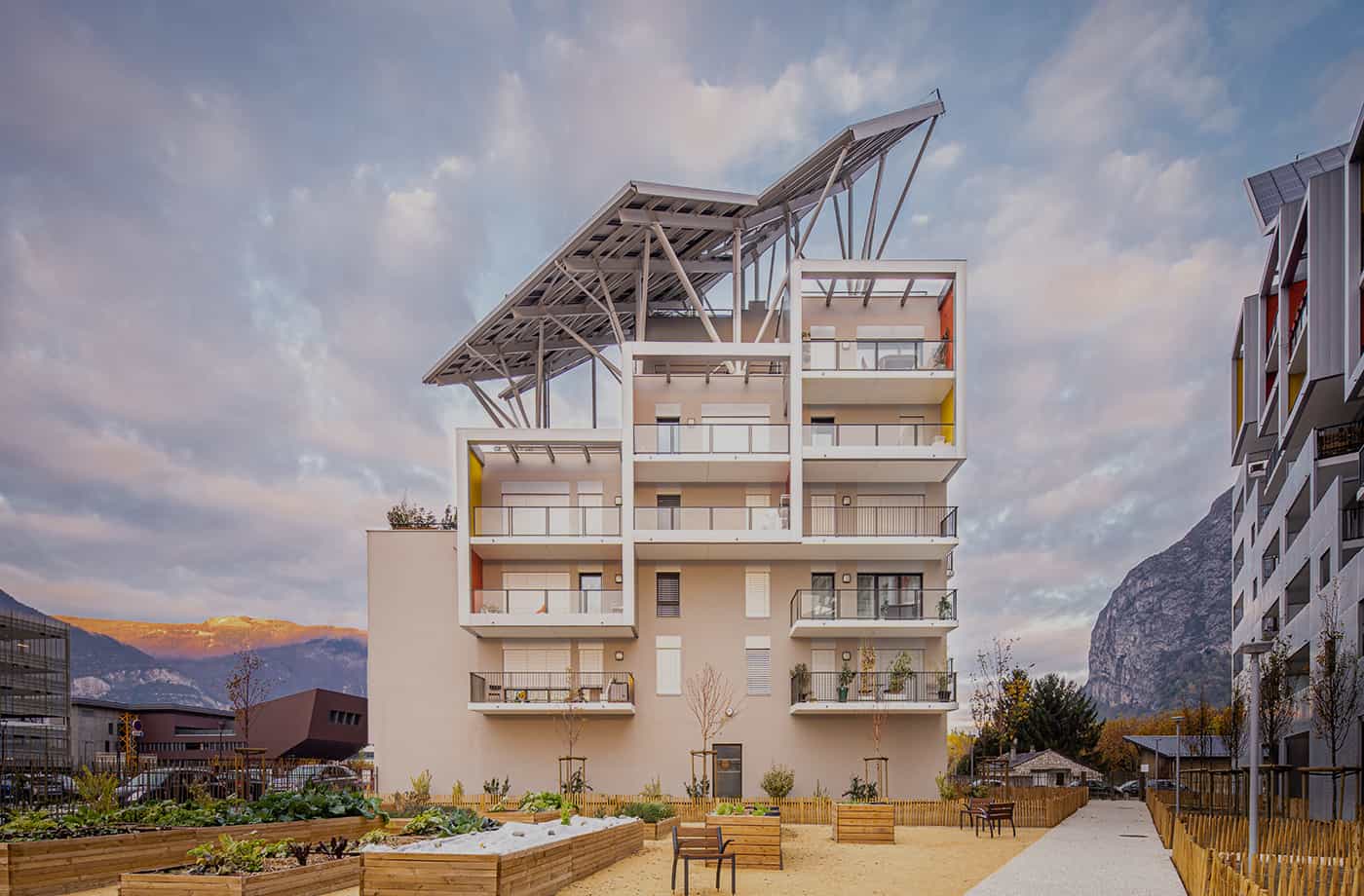
National Agency for Territorial Cohesion: idea factories

Providing advice and support for groups of territorial authorities in designing, defining and implementing their projects, the National Agency for Territorial Cohesion has developed a concept of “foresight labs” to strengthen cooperation between metropolises and their surrounding territories, particularly in the areas of energy and food.
Interview with Annabelle Boutet, head of the Foresight, Monitoring and Innovation unit at the National Agency for Territorial Cohesion (ANCT)
Cooperation between metropolises and their surrounding territories was the theme of one of the first “foresight labs”, a scheme that is run by the unit that you direct at the National Agency for Territorial Cohesion. Before we discuss this particular example, explain to us the purpose of the labs.
Annabelle Boutet: We launched our first foresight labs in 2018 when we were at the General Commission for Territorial Equality (CGET). The original idea simply consisted of reviving the forecasting activities inherited from the Interministerial Delegation for Territorial Planning and Regional Attractiveness (DATAR), which had merged with the National Agency for Social Cohesion and Equal Opportunity and the General Secretariat of the Interministerial Committee for Cities back in 2014 to form the CGET.
The idea wasn’t to operate in think tank mode with experts, but in the context of a series of year-long labs to develop forward-looking reflections on a given theme for each of them. We also had to cross-reference the lessons learned from these labs to draw national lessons. We therefore reversed our way of working: we started by working with players on the ground.
Each lab is jointly put together with an association of elected officials (one of a number of French association of mayors and of towns and cities, etc. We support groups of four territories in forward-looking studies which, at the end of the lab, result in an action programme adapted to each of them.
In addition, since 2019, each lab has been linked to one of my agency’s programmes, such as Action in Town Centres, Small Towns of Tomorrow, Industrial Territory, etc. So this work also provides input for the Agency’s own programmes.
What is the role of the foresight, monitoring and innovation unit that you head?
A.B.: Our role is to draw up the specifications for each lab. This includes a theme, a transition (ecological, economic, demographic, or public action), a hypothesis and working areas. We also set up a specific steering committee for each one, bringing together at least one association of elected representatives and an ANCT programme. Depending on the subject, we involve ministries, government agencies researchers, etc. And we recruit a consultant to follow the seminars for one year: four working seminars in each of the four territories and four inter-site seminars, making around twenty seminars in all.
Each municipality or grouping of municipalities that we support forms a local working group of fifteen to twenty people with the players of its choice (elected officials, staff members, companies, businesses, industrialists, local residents, associations, etc.). During the local seminars, the consultant helps them develop a vision of the future of their territory before drawing up an action programme to turn this vision into operations to be carried out in the short term. It was really important to have forward-looking thinking with an operational perspective. At a local level, each authority and its local working group will address the theme and the working areas of the foresight lab according to its own concerns and priorities, but with the consultant we ensure that every party develops a wide-ranging approach.
As far as inter-site seminars are concerned, they enable representatives of the territories (one elected official and one specialised staff-member from each authority) to share their experience, perhaps to constitute a network, and to jointly develop proposals for national action along with the steering committee.
In conjunction with France Urbaine and the French National Association of Local Authorities, the ANCT launched several projects in 2018 on the topic of cooperation between metropolises and their neighbouring territories. What can you tell us about them?
A.B.: A pact between the French government and the metropolises was signed in 2016, at the instigation of the government. In particular, it encouraged metropolises to cooperate with the territories surrounding them.
We began by making an inventory of cooperation between metropolises and neighbouring territories. We sent out a questionnaire to the 22 metropolises and their neighbouring territories. They had to provide information on the themes, methods, partners and state of progress of their projects. The 21 metropolises that responded reported 173 cases of cooperation. We deliberately avoided giving a restrictive definition either for the term “cooperation” or for forms of cooperation (grouping of authorities, ad hoc structure, contract, agreement with or without a legal structure, etc.). So no form, method or theme was excluded. It was primarily cooperation in the form of agreements, charters and contracts that were reported to us. What emerged more than anything from the inventory was the existing momentum, which was ubiquitous, polymorphous, and related to very diverse subjects. We then conducted a further survey on tools and methods for observing inter-territorial dynamics.
The dynamic of cooperation was already there. What more can a lab on the subject achieve?
A.B.: We saw that the examples of cooperation reported in the inventory consisted of existing or planned cooperation, responding to current or very short-term needs. The lab focused on issues that will require cooperation between metropolises and their surrounding areas in the future. It also sought to identify courses of action to support their implementation. That was the purpose, and we chose to work alongside Brest, Nantes, Rouen and Toulouse. Each of these metropolises adopted one or two working topics. Brest chose territorial attractiveness, Nantes energy, Rouen mobility and sustainable food, and Toulouse sustainable food.
The reflection covered a number of questions. What has to be changed, improved, for cooperation? What actions should be put in place? What type of governance should be instated? Everyone reached results that were specific for their territory. But from all the feedback we tried to learn lessons that would be useful for all the territories.
What success factors did you identify from the feedback?
A.B.: The first thing is to know the dynamics of the territory. You need to have tools for observing and measuring flows (of energy, water, materials, human resources, etc.) and to have data to objectify the questions on which you have to cooperate. Looking at the examples of cooperation that have been submitted to us, we all observed that they were aiming to resolve an issue that was of immediate concern to two territories. But other subjects of cooperation should be anticipated, and this calls for the availability of observation systems and thus of data characterising flows and complementary elements between territories.
The second important point, which is related to the first, is the need for a single strategic vision of cooperation. Everyone has set up cooperation agreements on different subjects, over different timescales and with different partners. It seemed necessary to have an overall vision rather than to see a multitude of different cooperation actions. Here again, the aim is to restore coherence.
The third point, which is also linked: put in place governance spaces for these cooperation operations. If several operations are launched, the same number of governance spaces are, too. We thought it would beneficial for there to be single space where you can share everything, both what works and what doesn’t.
The fourth point: if you want to develop cooperation between metropolises and surrounding territories, you have got to provide the means for doing so (elected officials, staff members, etc.). It seems that having a department or an elected official responsible for “cooperation” within a metropolis makes things a lot easier. This is the case in Bordeaux and Rennes, for example. In addition, a number of urban planning departments (Brest and Tours are two examples) provide competent support for cooperation projects.
This leads on to a fifth point: specific funding. By definition, a cooperation initiative rarely corresponds to the classic financial support mechanisms that cover thematic operations carried out by a single local authority. Although the government can fund cooperation actions, for instance from the National Fund for Territorial Development and Planning, there is nonetheless no dedicated fund for cooperation. The four metropolises that we supported therefore stressed that it would be useful for the regions and the government to provide specific funding to support cooperation between territories, whether for the purpose of investments or ongoing operations.
Finally, there were proposals to develop the legal framework, for example on exemptions from the rules applying to competition, the pooling of human resources, financial transactions, budgetary control rules, general interest services and in-house operations.
What are the obstacles to cooperation?
A.B.: The issue is essentially lies in how things are represented. A territory neighbouring a metropolis can have the impression, for example, that the metropolis is going to draw on its resources with no satisfactory compensation, that it will have less to gain. But there can be no satisfactory cooperation without reciprocity. Everyone must gain from cooperation. If the elected officials and the agencies can demonstrate to each other that each has something to gain, then cooperation is possible. But until we have managed to prove this, there may be obstacles. Which explains the importance of having data that enables you to objectivise the areas on which you have to cooperate and determine the advantages for each party.
Let me also add that the costs and workloads entailed in cooperation can prove to be an obstacle.
Several territories have set autonomy (in food or energy, for example) as a goal for the coming years. Isn’t this an additional motivation for cooperation?
A.B.: Cooperation can strengthen local value chains by bringing together supply and demand in such fields as food and energy, and in this respect it can contribute to the autonomy strategies of some territories. Territories neighbouring metropolises have resources – for example, they can produce energy because they have space and land available, or for the same reason they can sometimes produce quality food to supply the metropolises. The density of the metropolis provides them with a substantial clientele. There’s something in it for everyone.
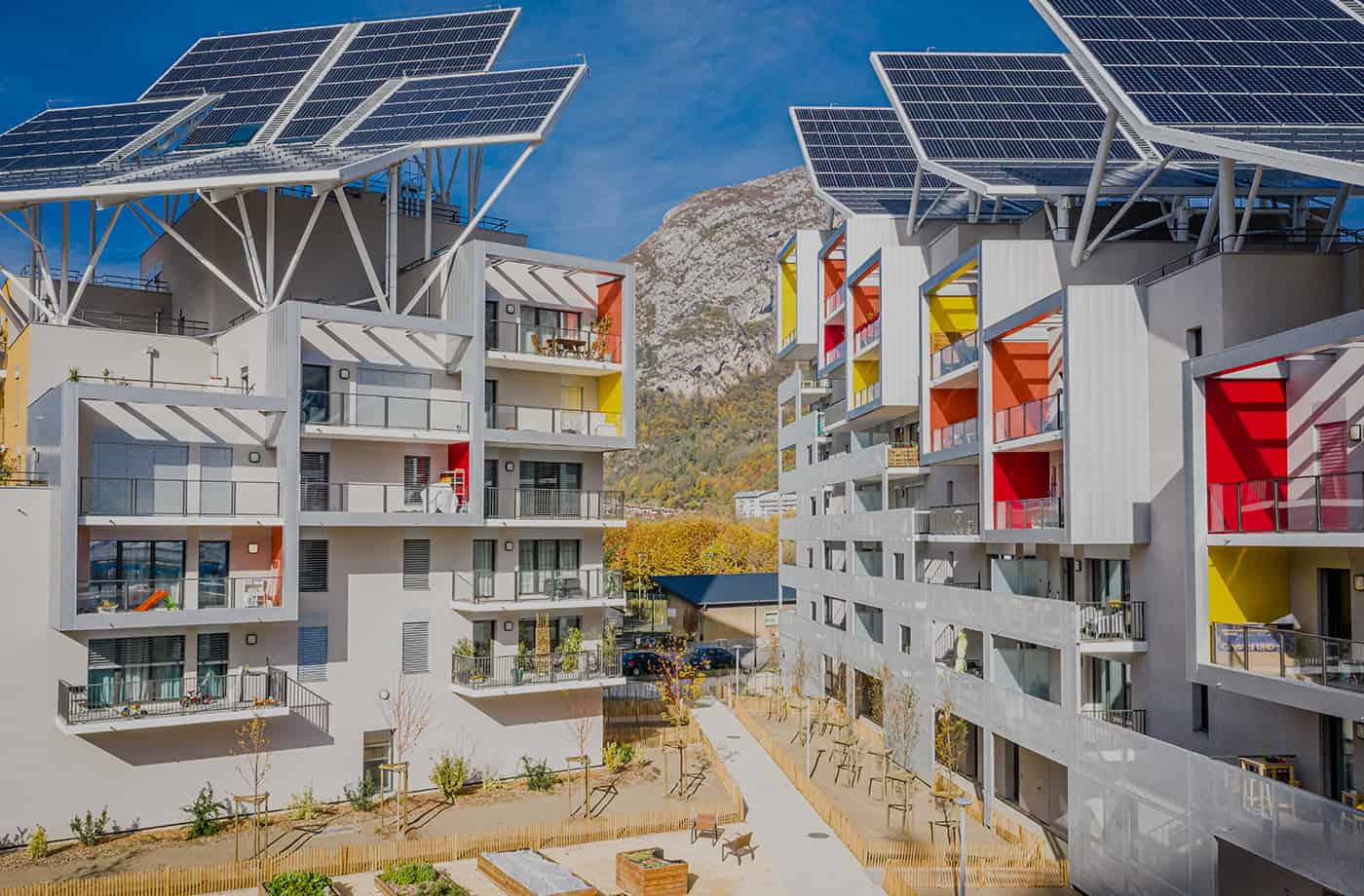
ABC Grenoble: tenants are key players in achieving autonomy
A first in France, the ABC (Autonomous Building for Citizens), built as part of the Presqu’Île ecocity in Grenoble, seeks to achieve self-sufficiency in water and energy. Incorporating a multitude of technological innovations, its occupants will be the driving force of its success, and its subsequent duplication.
An interview with Bruno Raynfeld, project director at Grenoble-Habitat.
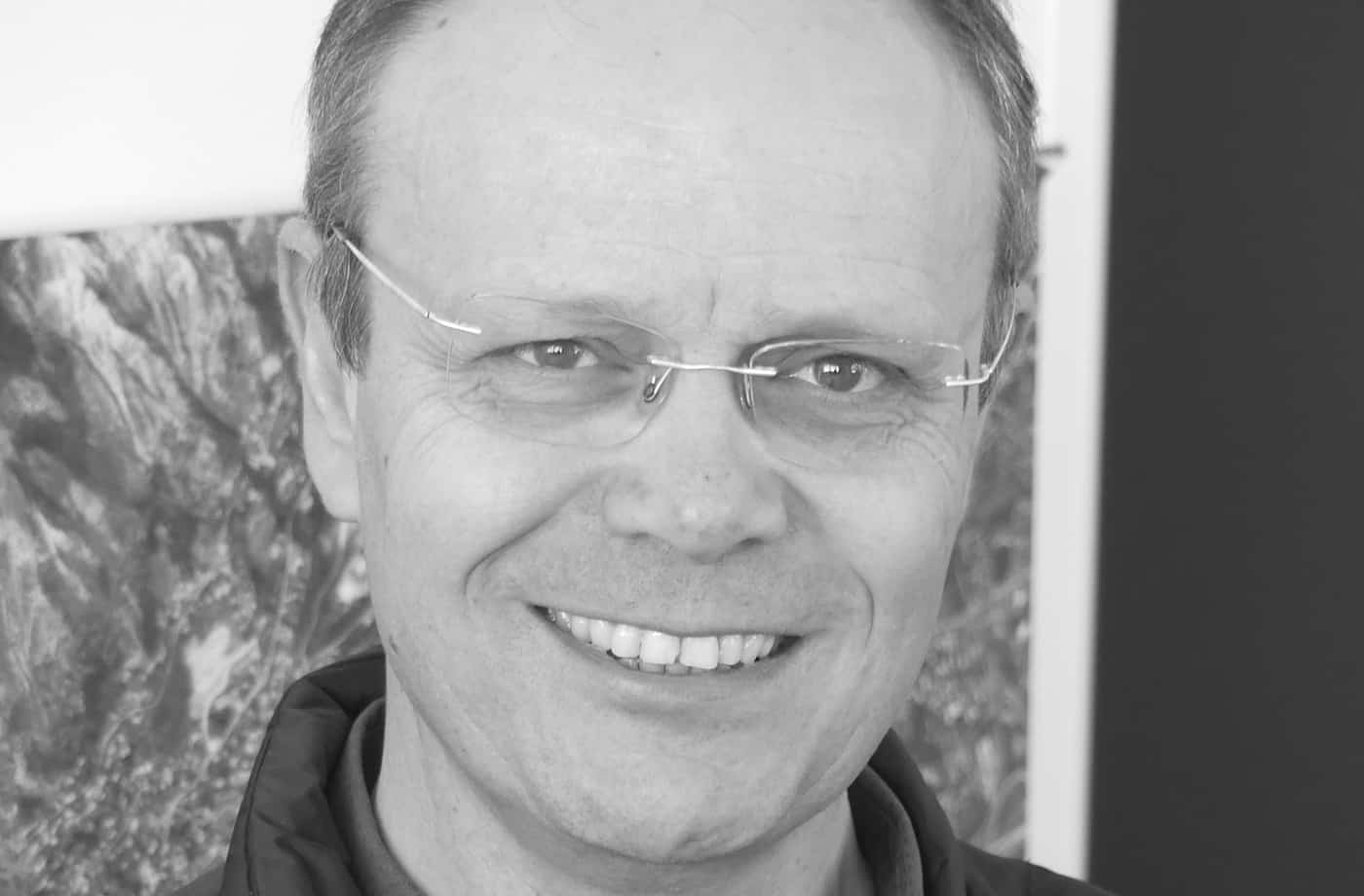
ABC, a building handed over in July 2020 and managed by Grenoble-Habitat, is “autonomous”. What does this mean?
ABC is a “demonstrator”: it is a building that extracts the resources necessary for it to function from its environment by mixing renewable energy production, energy storage and monitoring of consumption. It aims to be 70% self-sufficient in energy, to reduce water consumption from the city network by two-thirds and to reduce household waste by 60%.
What does this entail in terms of features? Are all the homes catered for in the same way, whether they are social or ‘intermediate’?
The twenty social housing units and the forty-two intermediate rental units have pretty much the same facilities. They have identical heating systems. There is just a difference with regard to air treatment, which takes the form of a collective double flow unit in the social rental building and individual units in the intermediate housing. Thanks to the choice of two different types of equipment, the feedback will be differentiated.
In addition, around ten homes are experimenting with “orbital showers”. This type of shower incorporates a technology originally developed for space stations, which explains the name. They allow water to circulate in a closed circuit. A sensor placed in the siphon analyses the detergent content of the water being drained. As soon as the water is clean enough, it starts to circulate in a closed circuit. So, when you have finished rinsing, you don’t need to use any more water and the water will cool down slowly as it passes through the circuit. This is very sophisticated equipment – it needs to be taken great care of by the tenants, and is still rather complicated to use.
How is the maintenance of the demonstrator carried out?
The maintenance of the entire water treatment plant is performed by specialists from Suez, which has had the process validated by the Regional Health Agency. For our part, we have to be satisfied that Suez is indeed carrying out the operations it has committed itself to, and that it is present every day to resolve all the minor malfunctions and to make any small adjustments that may be necessary.
As regards electricity production, where no health issues are at stake, maintenance is much more static. We are in a system where the energy supplier, Gaz Électricité de Grenoble (GEG), remains the owner of the photovoltaic park. The operating plan covers the supply of energy to the autonomous building, and the sale of the surplus to the grid.
What about waste collection?
Grenoble Metropolis is responsible for collecting the waste. As the landlord, we coordinated the installation of composters on the site and helped raise awareness of composting, reuse, bartering, and recovering all those things that we usually tend to throw away. Each home is equipped with a compost bin and we have identified several motivated individuals among the residents who are training their neighbours in these new practices.
Do tenants get feedback on their ongoing consumption?
An application called Wizom centralises all energy and water consumption and gives everyone access to their data. It provides information on the main sources of consumption: heating, cooking, washing machine, etc. It’s the same for water: the application shows whether consumption is mainly in the bathroom or the kitchen. Near the front door of each apartment, there is an interface that lets tenants monitor the status of their consumption. As they strive to lower their consumption, they know whether they are making progress or not, and why. For many tenants, access to this data is important.
The ways in which the ABC used are rather unusual, in that they must allow the building to meet its autonomy targets. How did you make the tenants aware of these uses and the restrictions they imply?
Ever since 2019, more than a year before any theoretical moving-in dates, we have been actively engaged on renting out homes. We devoted eight to ten evenings to visits and we held open days at the site to promote it and inspire people to want to come and live there. This also allowed us to gauge people’s motivation, depending on their degree of sensitivity to environmental issues, to low consumption, and to the impact that each of us can make on the future of the planet on a daily basis.
Some people talked about these questions very eloquently when they came to visit, while others had clearly come along more out of curiosity.
We explained in advance what would be special about living in these buildings. Prospective tenants were invited to an onsite showroom, where the principles of the project were explained to them. Using visuals, documents and samples, we explained to them how the building was trying to be virtuous in its carbon impact: low-carbon concrete for its structure, cork exterior insulation (which is a first), and so on. We also explained to them how the equipment and its uses would back up their efforts to reduce electricity and water consumption.
In addition, a show flat allowed visitors to see for themselves that the homes were “normal” and “pleasant”, although some restrictions applied to certain features such as the orbital showers. Potential tenants would also see other advantages for these apartments, because the kitchens and bathrooms are fully equipped with high-performance appliances (washing machine, dishwasher, cooking appliances) with low water- and electricity-consumption ratings.
Finally, these visits were an opportunity to spread our desire to create an onsite collective, highly committed on the issue of low consumption and on how to live together in a collective housing complex that is a little richer than what may exist in many cases. We knew that the dimension collective was important for the apartment complex to operate successfully, and that the autonomy issues would only be tackled with people who are interested in the building, its status as a trailblazer and the changes in use that it represents.
The preparation took some time. For the social housing, we had to obtain exemptions from the metropolis to adapt the allocation schemes for these rather unusual homes to take account of the applicants’ commitment and motivation. Normally applicants are placed in a particular building as a result of chance, on the basis of a scoring system and the analysis of anonymous files. In this instance, that would not be enough.
How did the collective dynamics of the building take shape?
The first support actions we took were rather thrown off course by the pandemic. During the first lockdown, and through the whole period before moving in, we held webinars to allow the future neighbours to get to know each other. Over a number of sessions, we organised what we called the “building of neighbours”: the future residents were asked to introduce themselves and to talk about their passions and about what they wanted to share with everyone else. Different profiles emerged: some people were interested in taking care of the gardens, others saw themselves as being more involved in recycling activities, and others were more interested in energy issues. So the “building of neighbours” exercise enabled people to get to know each other before actually meeting, and to have a first idea of the collective that could be set up. Meanwhile, the future tenants set up a WhatsApp group with a very effective newsfeed. The collective dynamic then gradually took shape thanks to the organisation of gardening workshops onsite run by a local group called “Cultivons Nos Toits” [Cultivate Our Roofs], which specialises in urban gardening. A collective was formed. Not all the residents are members, but at least twenty families meet regularly. They are divided into specific working groups with specialists in composting, people who look after the shared gardens, etc. A consultant specialising in support is in contact with the residents at least once a month, with the task of guiding and giving impetus to the residents’ collective, which includes organising workshops, setting up working groups, running challenges, etc. Around ten workshops were launched in 2021. And we’ve noticed that the tenants are now getting increasingly independent. All these people have started working to bring ABC to life , and to broaden and enrich its activities.
Can you give us an example of how they have surprised you?
Several tenants have organised their own team-based ecology challenges, called “my little planet”. They are going to clean up the banks of the river Isère. They garden in all the common areas of the complex. They’ve set themselves challenges on their own initiative, such as on shower water consumption. They have run bartering and exchange sessions and do-it-yourself workshops, and they’ve even formed a music group that gets together for jams!
Doesn’t all this increase the attractiveness of the building and the value of the properties?
These actions meet some of the expectations of living in a more participative environment: we talk about “collective” housing but in point of fact it reinforces individual behaviours from all those concerned. Silo apartments are common, as a result of reducing the communal areas in the quest for the best possible profitability. This non-generous attitude creates a lack, because in these conditions it is difficult to take ownership of communal space. But what we find is that some of the tenants really want to find spaces that allow them to be creative with their neighbours.
In the ABC demonstrator, all this works! We can see that the residents are making full use of all the space, meeting and mingling with each other, regardless of age, profile or level of income. The fact that this is a pioneering building also contributes to bringing together people who enjoy the same interests, who want to share spaces. Yes, this building truly meets a demand, and not only are people buying into the project, they are sometimes even more enthusiastic about it than us!
